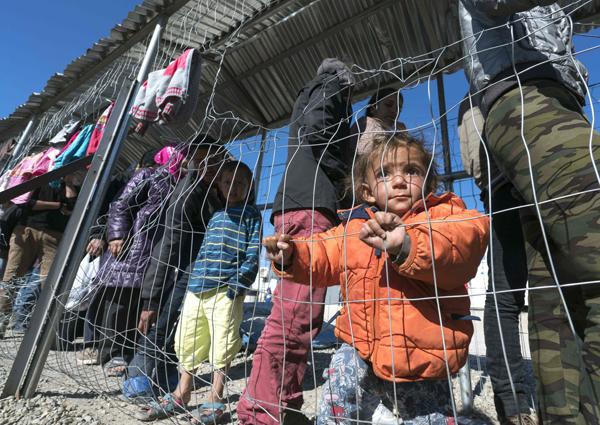You are here
Migration is burning issue in EU election campaign
By AFP - Apr 29,2019 - Last updated at Apr 29,2019
BRUSSELS — Migration is resurfacing as a hot topic in the election campaign for the new European Parliament after sowing discord across the EU throughout the outgoing legislature’s five-year term.
In order to shed light on the debate, here are figures ranging from the number of foreigners in the European Union to requests for asylum received by the 28-nation bloc.
In all, around 7.5 per cent of the more than 510 million people in the EU did not hold the citizenship of the country where they lived as of January 1, 2017, according to Eurostat.
Among them were 21.6 million people, or 4,2 per cent of the whole bloc, who had the nationality of a non-EU country, according to the European statistics office. Some 16.9 million were citizens of another EU country.
Germany led the way in welcoming non-nationals, with 9.2 million people, followed by the United Kingdom with 6.1 million, Italy five million and France 4.6 million.
Luxembourg accounted for the highest proportion of foreigners who made up 48 per cent of its population. Poland and Romania accounted for the least, at less than 0.6 per cent each.
EU countries can grant residence permits to nationals of third countries to allow them to work, study or even receive asylum.
Some 3.1 million new permits were issued in 2017, according to Eurostat. Poland gave out the highest number, some 683,000, followed by Germany with 535,000, Britain 517,000 and France, 250,000.
In 2017, Ukrainians received the highest number of third-country permits, at 662,000 — ahead of Syrians, who received 223,000, and Chinese, who got 193,000.
In 2015, the EU experienced an unprecedented surge in migration via the Mediterranean Sea, most of them fleeing war and instability, particularly in Syria.
The UN’s International Organisation for Migration (IOM) said there were more than one million, including more than 850,000 who entered Europe via Greece.
Some 56 per cent of them came from Syria, 24 per cent from Afghanistan and 10 per cent from Iraq.
However, arrivals steadily decreased afterwards. In 2016, the numbers dropped to just over 363,000 by sea and 20,000 by land.
Total arrivals plunged again to 187,000 in 2017 and to 144,000 in 2018, when Spain became the main entry point to Europe with 65,000 crossing its borders.
For 2019 so far, the IOM recorded around 18,000 arrivals in the bloc from January until mid-April.
EU countries registered 580,000 new requests for asylum in 2018, who accounted for less than half of those filed during the 2015 historic peak, when 1.26 million arrived.
At 80,900, Syrians accounted for the largest number of people filing an initial request, according to Eurostat.
Afghans came next with 41,000 and Iraqis came third at 39,600, ahead of Pakistanis, Iranians, Nigerians and Turks.
In France, the main asylum applicants in 2018 were from Afghanistan, ahead of people from Albania and Georgia.
After the 2015 record, the number of first asylum requests in the EU remained about the same in 2016, at nearly 1.2 million, before starting to fall sharply in 2017.
Those requesting asylum are far from assured of receiving such protection.
In 2018, EU countries awarded asylum to around 333,000 applicants, according to Eurostat. The figure is 40 per cent fewer than in 2017, when the number granted had decreased by 25 per cent compared to 2016.
The main beneficiaries in 2018 were again Syrians, who accounted for 29 per cent of the total, ahead of Afghans at 16 per cent and Iraqis at 7 per cent.
The countries that led the way in granting some form of protective status, such as that of refugee, were Germany at 139,600, Italy at 47,900 and France at 41,400.
Syrians and Eritreans were far more likely to receive asylum than other nationalities, with 88 per cent success rates for the former and 83 per cent for the latter in 2018.
The figure for Afghans was 46 per cent, Iraqis 42 per cent, Mali nationals 27 per cent, Senegalese 20 percent and Albanians 5 per cent.
Related Articles
AMMAN — The value of rejected loan requests dropped by 9.5 per cent during 2017 compared to a 17.3 per cent drop the previous year, the Jord
BRUSSELS — Turkey has met fewer than half the conditions for its citizens to be granted early visa-free travel to the European Union, just 1
BARCELONA — In Spain, one of the hardest-hit countries in the pandemic, the coronavirus spread quickly and widely without being detected, es















